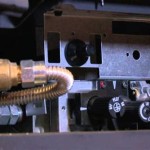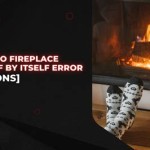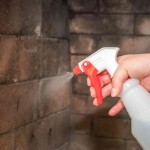How to Childproof Your Fireplace
Fireplaces, while offering warmth and aesthetic appeal, pose significant safety hazards to young children. Their inviting appearance and accessible location often attract curious toddlers and infants, making it imperative for homeowners to implement comprehensive childproofing measures. The following guide details various strategies to mitigate fireplace-related risks and create a safer environment for children.The dangers associated with fireplaces extend beyond the obvious burn risks. Children may attempt to climb on or into the fireplace, potentially causing injury from falls or contact with sharp edges. Furthermore, soot and ash can be ingested, leading to health complications. Embers, even when the fire appears extinguished, can remain hot for extended periods, posing a severe burn threat. Therefore, a multi-faceted approach is necessary to effectively childproof a fireplace.
Establishing a Physical Barrier
A primary method of childproofing a fireplace involves establishing a robust physical barrier to prevent direct access. This barrier should effectively block children from touching the fireplace, whether it is in use or not. Several options are available, each offering varying degrees of protection and suitability based on individual fireplace designs and home layouts.
One common solution is the use of a fireplace screen. Opt for a sturdy, heavy-duty screen constructed from metal or other heat-resistant materials. The screen should be tall and wide enough to completely cover the fireplace opening, extending beyond the edges to prevent children from reaching around it. Ensure the screen is securely anchored to the floor or wall to prevent it from being easily moved or toppled over. Regular inspections of the screen's integrity, including checking for loose connections or damage, are crucial for maintaining its effectiveness.
An alternative to a standard screen is a fireplace fence or play yard. These enclosures create a larger buffer zone around the fireplace, offering enhanced protection by keeping children at a greater distance. Fireplace fences typically consist of interlocking panels that can be configured to fit various fireplace sizes and shapes. Look for fences made from durable, non-toxic materials with secure locking mechanisms. The panels should be tall enough to prevent children from climbing over them. Regularly inspect the fence for any signs of damage or weakness. When installing, ensure the gate is childproof and difficult for them to open.
For fireplaces that are not frequently used, consider installing a temporary cover or door. This can be a simple piece of plywood cut to fit the fireplace opening and securely fastened in place. Alternatively, a custom-made door can be installed, providing a more aesthetically pleasing and permanent solution. Ensure that the cover or door is difficult for children to remove and that it effectively seals the fireplace opening to prevent access to soot, ash, or any remaining embers.
Regardless of the chosen barrier, emphasizing its purpose to older children is important. Explain that the barrier is in place to keep them safe and that they should not attempt to climb on, move, or tamper with it. Consistent reinforcement of this message will help to ensure that children understand the importance of respecting the barrier.
Addressing Fireplace Hazards When Not in Use
Childproofing a fireplace extends beyond its active use. Even when the fireplace is not lit, potential hazards remain. Soot and ash accumulation, sharp edges, and the allure of an empty space can all pose risks to children. Addressing these hazards requires proactive measures to minimize the possibility of accidents or injuries.
Regular cleaning of the fireplace is essential. Soot and ash contain harmful particles that can be ingested or inhaled, leading to respiratory problems or other health issues. Vacuum the fireplace thoroughly after each use, and occasionally sweep the hearth to remove any accumulated debris. Consider using a specialized fireplace vacuum cleaner designed to efficiently capture fine particles. Disposable ash bags are also a great option to reduce the risk of spreading dust when cleaning.
Inspect the fireplace for any sharp edges or protruding objects. Fireplace tools, such as pokers, shovels, and tongs, should be stored safely out of reach of children. Consider storing them in a locked cabinet or on a high shelf. If the fireplace has a mantel, ensure that any decorative items are securely placed and cannot be easily knocked off. Padded corner protectors can be installed on sharp edges of the hearth or mantel to cushion potential impacts. Smooth any rough edges to further minimize the risk of cuts and scrapes. Ensure that any brick or stone is properly secured to avoid any possibility of a child removing, and possibly ingesting, the materials.
The open space of the fireplace can be tempting for children to explore or use as a play area. To deter them from entering the fireplace, consider placing an unattractive item inside, such as a large, heavy object that is difficult to move. Alternatively, you can use a brightly colored object that signals a boundary. Consistent reinforcement of the message that the fireplace is not a play area is crucial. This should be done along with the barrier in place to deter children from entering the area at all times.
For gas fireplaces, ensure the gas valve is turned off when the fireplace is not in use. Installing a childproof cover over the gas valve can further prevent accidental activation. Regularly inspect the gas line for any leaks. Consider hiring a professional to inspect your gas fireplace annually if you are at all unsure about the proper operating procedures.
Educating Children About Fire Safety
While physical barriers and hazard mitigation are essential, educating children about fire safety is an equally critical component of a comprehensive childproofing strategy. Age-appropriate education empowers children to understand the dangers of fire and develop safe behaviors around fireplaces and other heat sources. Frequent reminders and age-appropriate lessons are key to maintaining children's safety around fireplaces.
Start with basic lessons about the dangers of fire. Use simple language that children can understand, and explain that fire is hot and can cause burns. Show them pictures or videos of burns and explain that they can be very painful. Emphasize that they should never touch fire or anything that is hot. This should be reinforced as they are growing and start exploring fire and heat sources with greater frequency.
Teach children about the importance of never playing near the fireplace. Explain that it is not a safe place to play and that they should stay a safe distance away from it. Demonstrate a safe distance using visual cues, such as drawing a line on the floor or using a piece of furniture as a boundary. Reinforce this message consistently, and redirect them to a safe play area if they approach the fireplace.
Explain the purpose of the fireplace screen or fence. Explain that it is there to protect them from the fire and that they should never try to climb on it or move it. Emphasize that it is important to respect the barrier and to stay away from the fireplace when it is in use. Reinforce that removing the barrier is a dangerous activity as well.
Involve children in fire safety drills. Practice evacuating the house in case of a fire, and teach them how to call for help. Show them where the smoke detectors are located and explain that they will sound an alarm if there is smoke or fire. Regularly test the smoke detectors to ensure they are functioning properly. Having children be involved in drills can reinforce the importance of proper safety and make them more comfortable in the event of an emergency.
As children grow older, provide them with more detailed information about fire safety. Teach them how to safely light a fire, if appropriate, and how to properly extinguish it. Explain the dangers of flammable materials and how to store them safely. Emphasize the importance of never leaving a fire unattended. Continuing to educate children throughout their development will help them be aware of the dangers associated with fires and fireplaces.
Implementing these childproofing measures can significantly reduce the risk of fireplace-related injuries and create a safer home environment for children. Regular maintenance, consistent reinforcement of safety rules, and ongoing education about fire safety are essential for ensuring the well-being of children around fireplaces.

How To Childproof Your Fireplace Baby Proof Sa South

3 Ways To Baby Proof A Fireplace Wikihow

How To Baby Proof Fireplace Important Checklist

Diy Baby Proofing Your Brick Fireplace Thisaveragemom

How To Baby Proof A Fireplace Diy Hearth Cushion Simply September

How To Baby Proof A Fireplace Diy Hearth Cushion Simply September

How To Childproof Your Fireplace Baby Proof Sa South

Baby Proofing Fireplace More Easy Hearth Padding Oh Love

3 Ways To Baby Proof A Fireplace Wikihow

Fireplace Child Pet Protection Screen South
Related Posts








